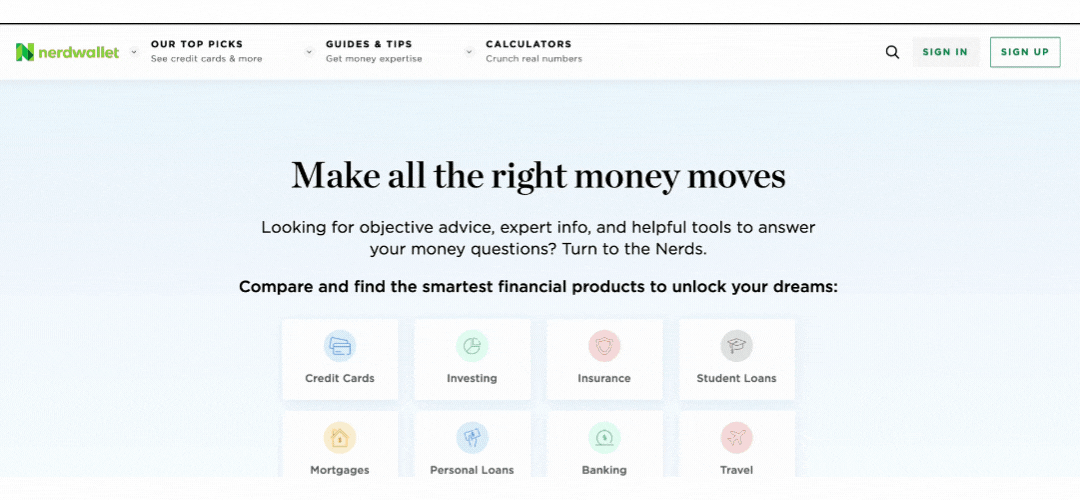Imagine that Google was willing to make a deal with you.
Google will give you clear instructions outlining the content that will dramatically improve your rankings, visibility, and traffic. In exchange, you promise Google that you’ll follow their advice to the letter and create the kind of content they’ve laid out.
Would you take that deal?
If you’re like most people, the answer to that question is yes. Google may not be willing to make a deal with us, but they have given us clear instructions outlining the kind of content they’d like to see.
I’m talking about the Quality Rater Guidelines.
What are the Quality Rater Guidelines and why do they matter?
Google’s Quality Rater Guidelines is a 176-page document telling Google’s 16,000+ Quality Raters how to evaluate search results and the pages listed in the results. Quality Raters study these guidelines and are tested by Google, verifying their knowledge before they’re allowed to provide ratings to Google.
See for yourself.
These Quality Raters analyze web pages looking for markers – expertise, experience, authority, trustworthiness, and relevance. Google asks these Quality Raters to review thousands of search results and all of the web pages listed in these search results.
How are these Quality Rater Guidelines used to impact search?
Google looks at all of the ratings from their 16,000+ raters across a wide variety of searches (63,000 tests last year via Quality Raters). They want to see which version of their search results delivered the highest quality, the most beneficial results, and the greatest value to searchers.
But why?
What’s Google’s intention with Quality Rater Guidelines?
“We work with external Search Quality Raters to measure the quality of search results on an ongoing basis. Raters assess how well content fulfills a search request, and evaluate the quality of results based on the experience, expertise, authoritativeness, and trustworthiness (E-E-A-T) of the content.”
So Quality Raters impact rankings then?
Nope.
Quality Rate Guidelines – page 6
Quality Ratings inform search algorithms.
In her post via Moz on E-A-T, Dr. Marie Haynes writes: “quality raters do not have the power to put a penalty on your website. They actually have no direct bearing on rankings. But instead, what happens is they feed information back to Google’s engineers, and Google’s engineers can take that information and determine whether their algorithms are doing what they want them to do.”
The relationship between Quality Rater Guidelines and E-E-A-T
At a macro level, Google wants Raters to take the following steps:
- Assess the true purpose of the page.
- Assess the potential of the page to be harmful, untrustworthy, or spammy.
- Assign a rating based on how well the page achieves its purpose
What about quality at the micro-level? What, according to Google, are the most important factors for Raters to consider when determining an overall Page Quality rating? Let’s refer to the page quality guidelines in their document.
- The Purpose of the Page
- Experience, Expertise, Authoritativeness, Trustworthiness (E-E-A-T)
- Main Content Quality and Amount
- Website Information/information outlining who is responsible for the main content (MC)
- Website Reputation/reputation about who is responsible for the MC
These page quality rating guidelines outline the main factors Google wants its Quality Raters to use to evaluate its search results (and web pages listed). We’re going to look at the relationships between these Quality Rater Guidelines and E-E-A-T.
Google wants high E-E-A-T content
Their guidelines as raters to look at the following factors:
- The experience of the creator behind the main content.
- The expertise of the creator behind the main content
- The authoritativeness of the creator, the content itself, and the website as a whole
- The trustworthiness of the creator, the content itself, and the website as a whole
Google asks Raters to use a scale ranging from lowest to medium to highest. Here’s how it defines Low and High-quality pages:
- High-quality pages: A high-quality page has/achieves a beneficial purpose. It has a high level of E-E-A-T, the right volume of high-quality content, and a helpful or descriptive title. A high-quality page also has a positive website reputation and a positive reputation for the content creators.
- Low-quality pages: Low-quality pages are deficient in an important dimension (e.g., low E-E-A-T content or poor creator expertise). As a result, these pages do not achieve their purpose well.
How should this impact content creation?
- You’ll want to audit your website and content. Using tools like Semrush or Ahrefs, you can identify both high and low-quality pages. Use the insights gained from your audits to spot and address problems that create E-E-A-T conflicts.
- Review previous audit implementation plans; identify any recent changes, and outline the impact made by each change or update.
- With high-quality pages, you’ll want to determine whether you should expand on your high-quality pages, creating more pillar and cluster content. Or work to rebalance the content that you already have.
- With low-quality pages, you’ll need to evaluate whether your existing pages should be deleted and redirected to a better-performing page or simply updated.
- Use your content audit to get a bird’s eye view of your content performance; make a list of the pages and sections of your website that are underperforming.
- Adjust your content strategy to go with the flow as searcher behavior changes over time. Work to keep your content up-to-date.
- Both high and low-quality content needs consistent attention. You’ll need consistent content equity rebalancing to counteract the inevitable maturation and decline of your content performance so you can maintain your rankings and visibility.
- Invest in fact-checking. Make sure the content you’re putting out is factually accurate.
- Share your credentials. Give Google the data they need to assess your expertise and authoritativeness. Share company and creator credentials where relevant.
- Use structured data on your home and utility pages.
- Use content goals to determine how often your organization should rebalance your content.
Specific Quality Rater guidance for websites
Google relies on your six honest serving men.
They use these guidelines to evaluate and identify high E-E-A-T websites.
“Every page belongs to a website, and it should be clear:
- Who (what individual, company, business, foundation, etc.) is responsible for the website.
- Who (what individual, company, business, foundation, etc.) created the content on the page you are evaluating.”
When it comes to websites, Google has guidelines for the following specific pages.
Home page
The home page of a website typically has links to important information about the website, credentials, accreditation from professional bodies, etc. Digital marketers and SEOs usually make it easy to get to the homepage of the website from any page on the site.


Use your home page to establish E-E-A-T. For example, your pages can include the following:
- Value proposition
- Headline, subhead, and supporting image (above the fold)
- Social proof (e.g., case studies, testimonials, reviews, etc.)
- Call-to-action
- Features
- Resources
- Navigation links
- Recent blog posts
Contact us and about pages
Most websites have “contact us” and “about” pages that provide Googlebot with information about who owns the site. Many companies (e.g., Netflix Blog) have an entire website or blog devoted to who they are, what they’re doing, what job opportunities are available, etc.
Use your about page to establish E-E-A-T. Share essential information outlining:
- Who you are
- What you’re about
- When your organization started (history, facts, origins story)
- How you do business (e.g., guarantees, warranties, etc.)
- Why you’re in business
What about your contact information?
According to Google, the various types and amount of contact information your website needs depends on the type of business you’re running.
- Organizations that handle money: Contact information is extremely important for websites that handle money — retail stores, banks, credit card companies, etc. Users need a way to get help when a problem occurs. Look for policies on payment, exchanges, and returns.
- Humor and satire websites: These websites need fewer details and a smaller amount of contact information. For example, a site like Funny or Die may not need the level of detailed contact information you’d expect from Target or Chase Bank.
- Anonymous websites: These sites have a legitimate reason for anonymity. Personal blogs or websites probably won’t include personal information (e.g., an individual’s home address or phone number). Websites that include user-generated content (e.g., forums, review sites, submission sites, etc.) may allow content creators to identify via an alias or username only.
What do Reputation and E-E-A-T mean in the context of Google’s Quality Rater Guidelines?
It’s about third-party validation.
It’s about a website’s and content creator’s reputation (if it’s different from the website proprietor). This third-party validation can be presented as links, reviews, social shares, citations, content, etc.
You’ll want to pay close attention to what others say about you.
In Google’s view, a website’s reputation is based on the experience of real users, as well as the opinion of people who are experts in the industry. Raters are asked to research the external reputation of a website and the organization behind it.
Why does this matter?
The more you know about a website’s reputation and the reputation of its content creator, the easier it is to identify its purpose. When you know that, you also know how well it accomplishes its purpose.
What are the Needs Met Rating Guidelines?
The Needs Met Rating is all about assessing the needs of mobile users. Google asks Raters to consider how helpful and satisfying their search results are for mobile users. The Needs Met scale is as follows:
- Fully Meets (FullyM): All or the vast majority of mobile users would be immediately and fully satisfied by the search result displayed. These users wouldn’t need to view other results. These search results are, according to Google, specific, clear, and unambiguous. Users wouldn’t need to view additional search results. Queries like “Amazon.com” from users in the United States would be a prime example.
- Highly Meets (HM): The majority of mobile users view these search results as very helpful. A minority of users may need to see additional results. Google considers these queries to be a “good fit. Information pages (e.g., encyclopedia articles and news articles) must be accurate and highly credible to receive a Highly Meets rating. Queries like “Trader Joes” can point to a specific location or the company website.
- Moderately Meets (MM): These search results are Helpful for many users OR very helpful for some mobile users. Additionally, some or many users may need to see additional results. Moderately Meets results are still a “fit” for the query; they may be less comprehensive, less up-to-date, or come from a less authoritative source, etc. Queries include “city of angels” is this pointing to Los Angeles, a school, or the song?
- Slightly Meets (SM): These search results are helpful for fewer mobile users. The query and search result are loosely connected, but it’s not a strong or satisfying connection. The majority of users would need to see additional results. These queries may be low quality, outdated, inaccurate, too specific, too broad, or too niche. Queries include “Honda Odyssey” which year or model are users looking for?
- Fails to Meet (FailsM): These search results completely fail to meet the needs of very few or no mobile users. All or almost all users will need to see additional search results. This refers to content that fails to satisfy the user’s intent. If users aren’t looking for the following types of content (e.g., porn, spam, misinformation, etc.), this content will meet this criterion.
What does this mean?
The relationship between Page Quality and Needs Met; The Needs Met rating is based on both the search query and the search result/content. Here are the takeaways from Needs Met.
- Useless results are always FailsM
- On-topic, helpful, but low Page Quality results should get lower Needs Met ratings than on-topic, helpful, and high
- Page Quality results
- Give helpful, high Page Quality pages (that are a good fit for the query) an HM rating
- Give helpful, low Page Quality pages (that are on-topic) an SM rating
If a page lacks a beneficial purpose and doesn’t serve the user’s intent, it’s always going to be rated the Lowest Page Quality – the Needs Met rating, how well-designed the page may be, it doesn’t matter if there’s no purpose.
Key E-E-A-T takeaways from Google’s Quality Rater Guidelines
E-E-A-T is a must-have.
If you’re creating content for your business and would like to rank for it, E-E-A-T is mandatory; this is even more important for brands covering Your Money Your Life YMYL topics. What does this mean for you?
- Establish expertise: Hire, build, or train in your expertise. Do what it takes to show Google you have a high level of expertise in your industry or field. Work to develop this expertise at the page level; create content demonstrating the high-level expertise Google is looking for.
- Demonstrate experience: It has a nuanced difference from expertise. Expertise equates to someone who specializes in the subject matter. Someone with experience has merely participated. Both are helpful in evaluating the usefulness of content because sometimes we need the perspective of someone who’s not an expert, but has first-hand experience.
- Develop authoritativeness: Get others talking about your business. Build links, generate reviews, and add citations. Create content that attracts a significant amount of attention from third-party sources. Build credibility and a strong reputation with influencers, experts, and users outside of your organization.
- Build trustworthiness: Use your six honest serving-men – Give Google and users clear information outlining who you are, what you’re doing, why you’re in business, and more. Share your contact information with customers, and be transparent and clear about your policies and procedures. Create content that’s accurate, precise, and up-to-date. Cite sources that are trustworthy, reliable, and clear.
These factors are essential, whether you’re creating content for YMYL queries or not. These guidelines aren’t rocket science; they just take a bit of work. Google’s given you the roadmap and a clear set of instructions to follow. Follow their plan, and you’ll find it’s easier to attract the rankings, visibility, and traffic you need.








